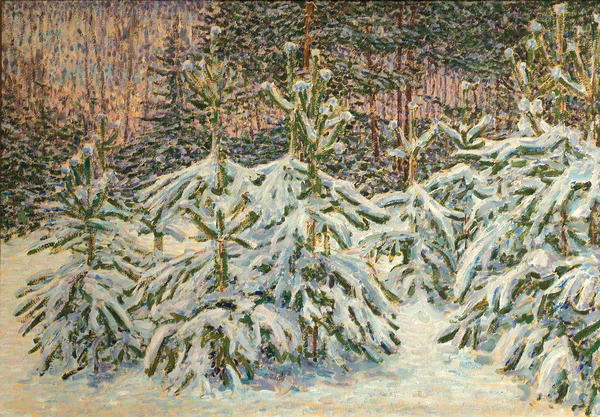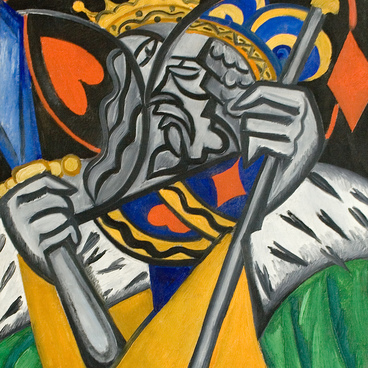Today Nikolai Meshcherin’s art is practically unknown to the general public, although at the turn of the 19th – 20th centuries he was respected in the artistic circles and popular with collectors.
Meshcherin was a talented self-taught artist. He did not receive a systemic art education but painted since his childhood. For some time he had to give up his passion for painting: after the death of his father, a hereditary citizen of honor and merchant in the First Guild, Nikolai Meshcherin as his eldest son took up his business, including the management of Dugino estate near Moscow.
When Meshcherin settled down in the estate, he could return to his hobby again. He seriously took up painting and photography gradually putting aside the merchant’s business. Meshcherin met and became friends with many artists and invited them to live and work in Dugino. Restoration artist Igor Grabar recollected that frequent guests of Meshcherin had been Isaac Levitan, Vasily Perepletchikov, Sergei Malyutin, Alexei Korin, Apollinari Vasnetsov, Valentin Serov and many other Moscow artists.
Nikolai Meshcherin was well educated, had a deep knowledge of art history and theory, loved collecting paintings of other artists with special preference for impressionists, collected books and had a passion for music.
In 1890s, the main themes of Nikolai Meshcherin’s art became the nature of his land and the poetic rural world. Young Pine Trees Covered with Snow reflected the artist’s interest in pointillism. This is a style of painting with separate strokes of regular, dotty or rectangular shape, which originated in France.
The exhibited painting depicts the fairytale beauty of the Russian winter. The artist painted in detail the young pine trees as if dressed in snow coats, almost transparent forest, the pinkish frosty sky, seen through tree branches and trunks. The painting is done in cool colors, but one can feel its lyricism and inner warmth.
The painting got to the Astrakhan Art Gallery thanks to the fine art expert Vladimir Eifert. In 1919, he bought it from the artist’s widow, Lidia Ivanovna Goryacheva-Meshcherina, the heir to his collection of paintings, and brought it from Moscow to Astrakhan. The money for the purchase was given by Pavel Dogadin, the Gallery founder.
Meshcherin was a talented self-taught artist. He did not receive a systemic art education but painted since his childhood. For some time he had to give up his passion for painting: after the death of his father, a hereditary citizen of honor and merchant in the First Guild, Nikolai Meshcherin as his eldest son took up his business, including the management of Dugino estate near Moscow.
When Meshcherin settled down in the estate, he could return to his hobby again. He seriously took up painting and photography gradually putting aside the merchant’s business. Meshcherin met and became friends with many artists and invited them to live and work in Dugino. Restoration artist Igor Grabar recollected that frequent guests of Meshcherin had been Isaac Levitan, Vasily Perepletchikov, Sergei Malyutin, Alexei Korin, Apollinari Vasnetsov, Valentin Serov and many other Moscow artists.
Nikolai Meshcherin was well educated, had a deep knowledge of art history and theory, loved collecting paintings of other artists with special preference for impressionists, collected books and had a passion for music.
In 1890s, the main themes of Nikolai Meshcherin’s art became the nature of his land and the poetic rural world. Young Pine Trees Covered with Snow reflected the artist’s interest in pointillism. This is a style of painting with separate strokes of regular, dotty or rectangular shape, which originated in France.
The exhibited painting depicts the fairytale beauty of the Russian winter. The artist painted in detail the young pine trees as if dressed in snow coats, almost transparent forest, the pinkish frosty sky, seen through tree branches and trunks. The painting is done in cool colors, but one can feel its lyricism and inner warmth.
The painting got to the Astrakhan Art Gallery thanks to the fine art expert Vladimir Eifert. In 1919, he bought it from the artist’s widow, Lidia Ivanovna Goryacheva-Meshcherina, the heir to his collection of paintings, and brought it from Moscow to Astrakhan. The money for the purchase was given by Pavel Dogadin, the Gallery founder.




